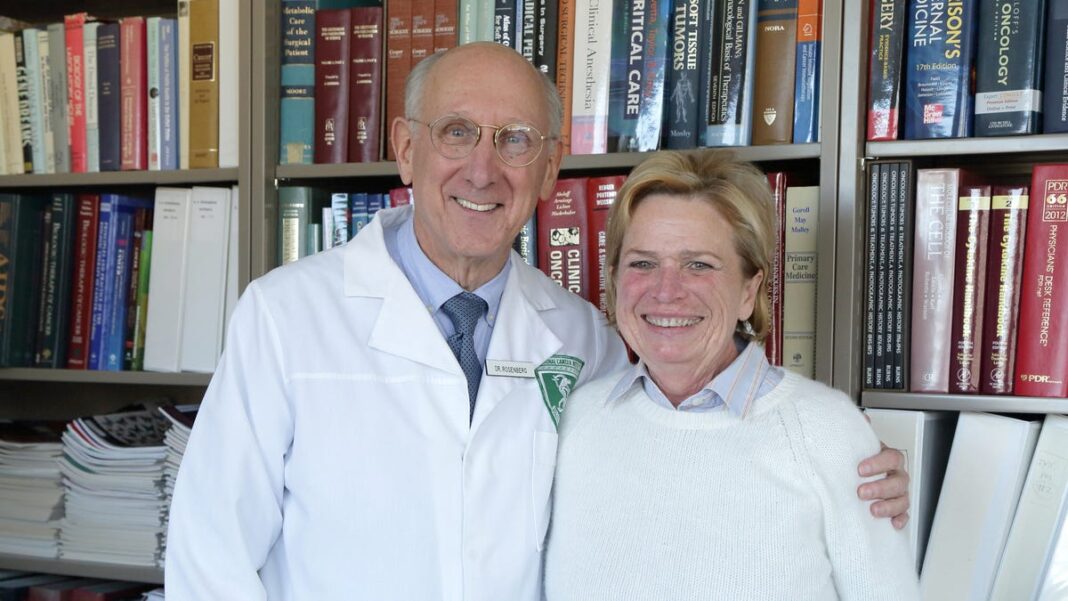A treatment plan that changed cancer forever. | Opinion
Dr. Steven Rosenberg saved a Navy officer’s life 40 years ago. Today, immunotherapy represents a groundbreaking advancement in cancer treatment.
In August 2015, former President Jimmy Carter faced terminal illness, believing he only had a few weeks left to live. His metastatic melanoma had metastasized to his liver and brain. Traditional radiation treatments might slow its growth, but Carter was expected to succumb to the disease.
However, doctors introduced him to pembrolizumab (Keytruda), an innovative immunotherapy that activates the body’s own immune system to combat cancer. Within months, his tumors dramatically decreased, and he was cured. Remarkably, he celebrated his 100th birthday last month.
Today, immunotherapy stands as a leading weapon in combating cancer. Remarkable recoveries, although not universal, have become frequent enough that names like Keytruda, Opdivo, and Yervoy are now recognized even by the general public, instilling hope in countless individuals.
This revolutionary field in cancer treatment originated 40 years ago, when a surgeon at the National Cancer Institute persevered with a controversial treatment that had previously failed 66 times, each resulting in a fatal outcome.
Utilizing our immune system to fight cancer
In 1984, Dr. Steven Rosenberg served as the chief of surgery at the National Cancer Institute. During his residency, he treated a patient with a remarkable history. This patient had been cured of advanced metastatic cancer after going through a severe infection that caused high fevers. It seemed that the immune system, activated to combat the infection, had also fought off the cancer.
This perspective was puzzling. Our immune system is designed not to attack our own cells, and since cancer cells derive from our own cells, conventional wisdom suggested they remained unnoticed by the immune system.
Yet, Rosenberg encountered another captivating case involving an organ transplant recipient who unfortunately received a cancerous kidney. Initially, the cancer spread, but once the patient’s immunosuppressive medications were halted to avoid organ rejection, their immune system responded and rejected the kidney along with the cancer.
These experiences prompted Rosenberg to question whether the immune system could be directed to destroy cancer. He hypothesized that T cells, the vital soldiers of our immune defense, could identify cancer cells as foreign invaders and eliminate them, but often lacked enough activated T cells to accomplish this task.
This led Rosenberg to innovate a different strategy. He aimed to use a cytokine, IL-2, that enhances T cell proliferation and employ it to boost T cell activity significantly.
Between 1980 and 1984, though, Rosenberg’s efforts bore no fruit. He treated 66 patients, but none benefitted, and all succumbed to their illness.
“It was unclear if our theory was valid,” Rosenberg reflects on those years. Nevertheless, he remained undeterred.
The turning point: The 67th patient with a file marked ‘death imminent’
His 67th patient, a 33-year-old Navy officer named Linda Taylor, was dealing with terminal metastatic melanoma. Like Carter, she had exhausted all available treatments, and her medical records bore a stamp that read “death imminent.”
Rosenberg cultivated billions of Taylor’s T cells in a lab. On November 29, 1984, he reinfused these T cells into her bloodstream, alongside high doses of IL-2, with the hope of energizing her immune system. The treatment proved demanding. Taylor experienced fever, chills, and pulmonary edema due to her immune system’s overactivity.
“Linda had remarkable strength,” Rosenberg recalled. “Few could have endured the treatment.”
“I took it one day at a time,” Taylor shared in a 2014 interview with the National Institutes of Health. “I never thought about quitting.”
A month later, a biopsy showed that her cancer cells were dying off. Over the following three months, Taylor’s tumors shrank and eventually vanished.
Rosenberg stated that, “For the first time,” an immune system intervention led to cancer regression in a human patient.
Following her service, Taylor returned to the Navy, eventually achieving the rank of captain and taking on two leadership roles during her lengthy career.
Rosenberg continued to treat additional patients. In a seminal paper published in The New England Journal of Medicine in 1985, his research group reported that 11 out of 25 cancer patients, who had exhausted all other treatment options, showed signs of tumor shrinkage.
His achievements brought him fleeting fame in the medical community. He was featured on the cover of Newsweek and was named one of People magazine’s “25 Most Intriguing People of 1985.”
In 1992, the FDA approved IL-2 as the first immunotherapy for cancer.
This breakthrough led to further innovations. Today, researchers can modify T cells to have surface receptors that specifically target the antigens found on individual tumor cells. This approach, known as “CAR T-cell therapy,” acts like a precision-guided missile, selectively eliminating cancer cells while sparing healthy ones.
However, immunotherapy drugs are not without flaws. They may lead to a range of side effects due to heightened immune response, including skin issues, digestive problems, and hormonal imbalances. Moreover, they are not effective for all cancer types and can be prohibitively expensive.
Nonetheless, the introduction of immunotherapy four decades ago has been a significant turning point, energizing extensive research in oncology.
While there may never be a single solution that cures all cancers, the potential of immunotherapy provides stronger hope that the fight against cancer will eventually lead to a triumph, transforming it from a question of “if” to “when.”
Andrew Lam, MD, is a retina surgeon and serves as an assistant professor at the University of Massachusetts Medical School. He authored “Saving Sight” and “The Masters of Medicine: Our Greatest Triumphs in the Race to Cure Humanity’s Deadliest Diseases.”

